Fujifilm X-M5 review: honey I shrunk the system camera
New entry-grade compact CSC goes big on features
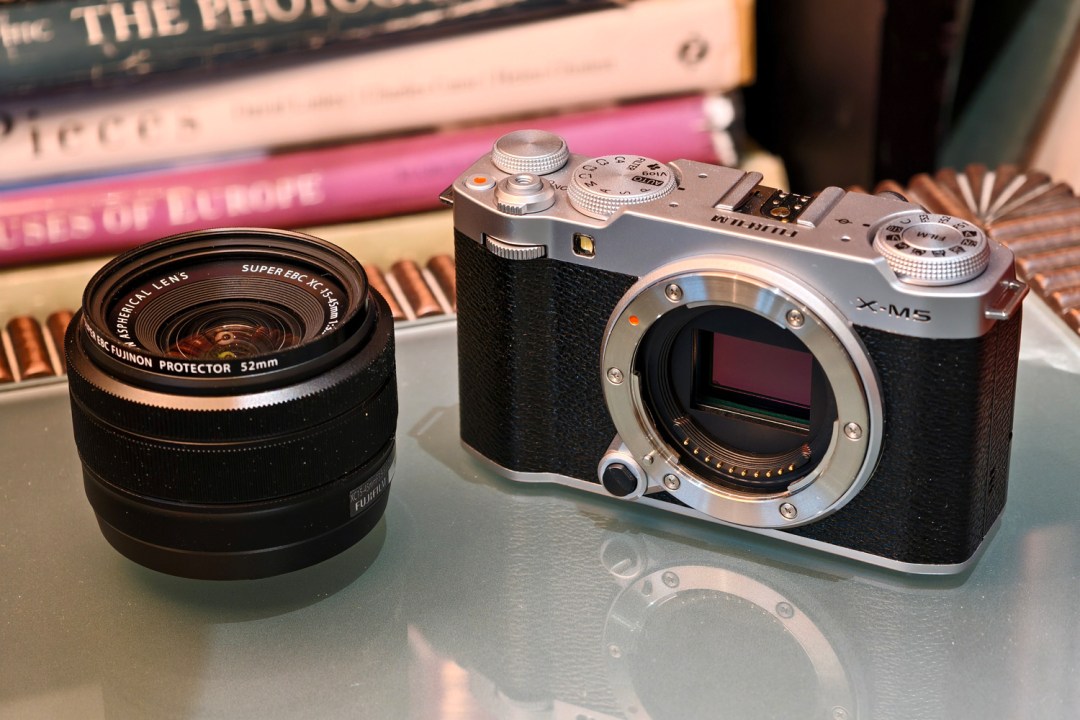
Stuff Verdict
The X-M5 brings Fujifilm’s smallest mirrorless model bang up to date with everything entry-grade shooters and smartphone converts could want. It loses a few features you’ll find further up the chain,
Pros
- Distictive stills and excellent colours, with film simulation creativity
- Very capable when it comes to video
- Speedy subject detecting autofocus
Cons
- No EVF or In-body stabilisation
- Controls are very compact
Introduction
Social media was largely to blame for compact cameras having their Brat summer in 2023, with influencers helping undo some of the damage caused by two decades of snowballing smartphone sales. That rolled on into the following year, with Fujifilm’s X100VI seeing stratospheric sales success – but not everyone has the cash for a flagship, or wants a fixed lens. The X-M5 wants to be the answer to that.
The new entry point to Fuji’s interchangeable lens line-up shrinks down to near pocket-friendly dimensions without skimping too much on the sensor – or forgetting millennial newcomers care just as much about video as they do stills. The firm’s celebrated film simulations also take a starring role, but an electronic viewfinder or in-body stabilisation don’t make the grade.
At $799/£799/€899 body-only, can this be just as much of a TikTok trendsetter and still keep long-time photographers happy?
How we test cameras
Every camera reviewed on Stuff is tested in a range of lighting conditions, with a variety of subjects and scenes. We use our years of experience to compare with rivals and assess ergonomics, features and general usability. Manufacturers have no visibility on reviews before they appear online, and we never accept payment to feature products.
Find out more about how we test and rate products.
Design & build: properly palm-sized
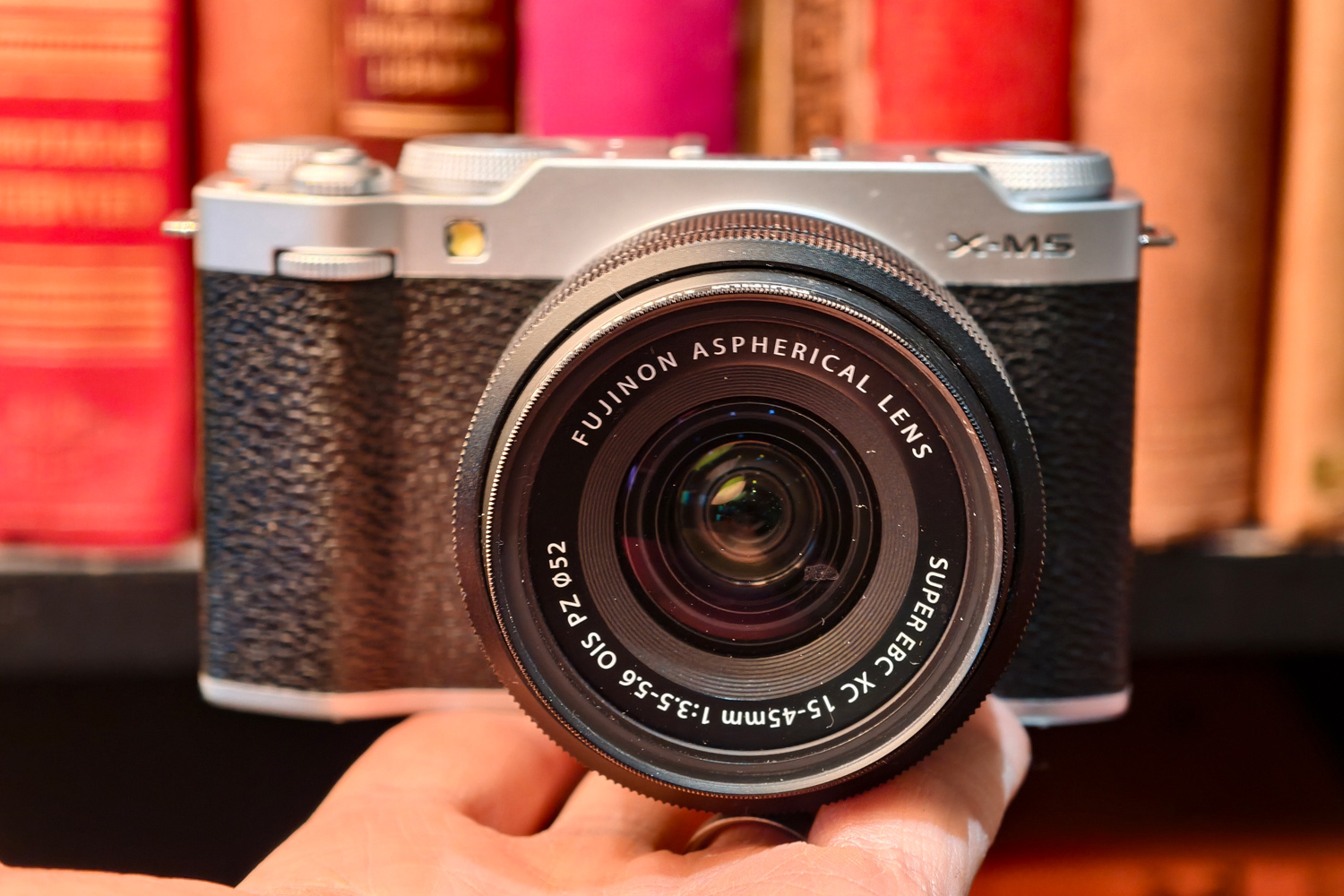
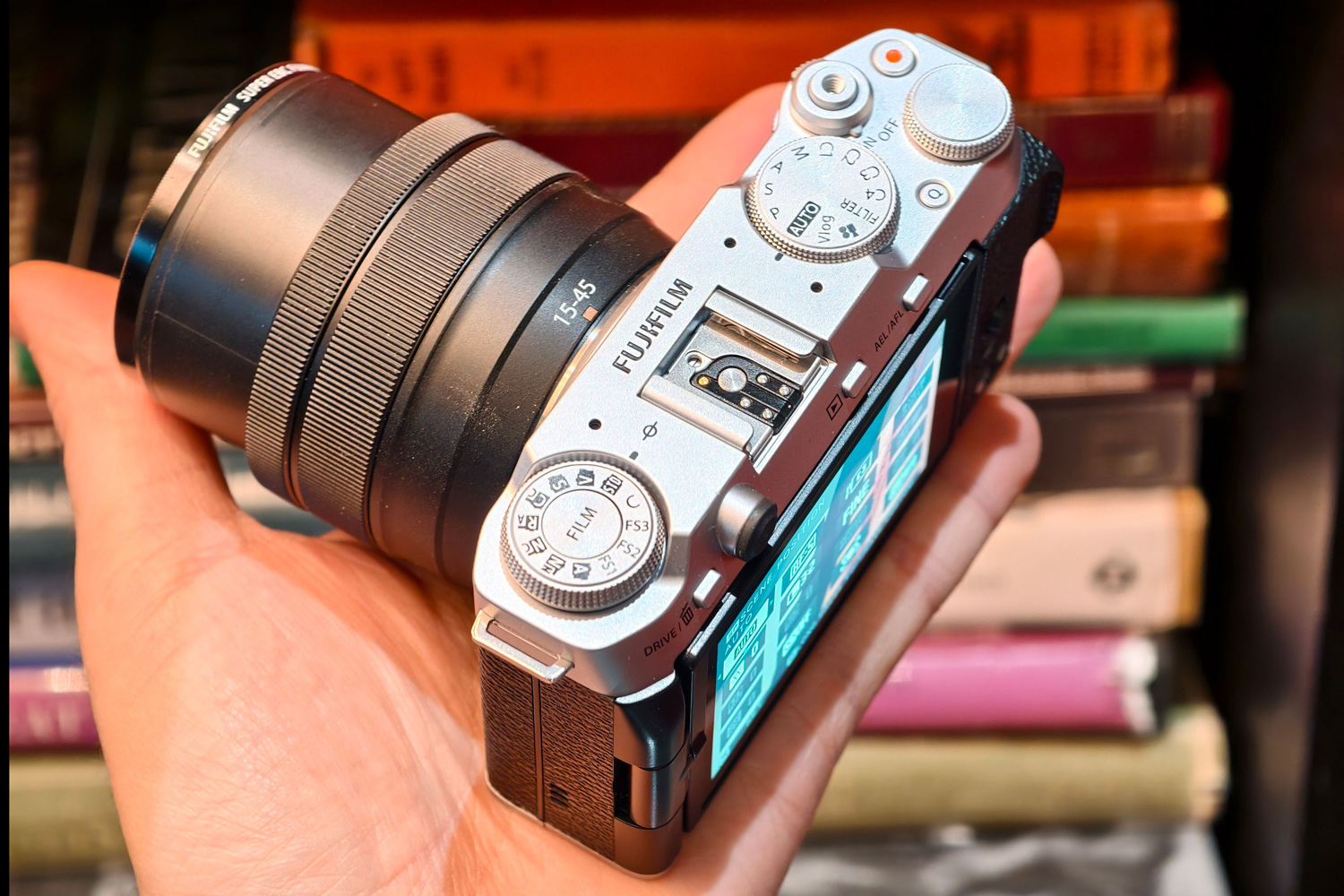
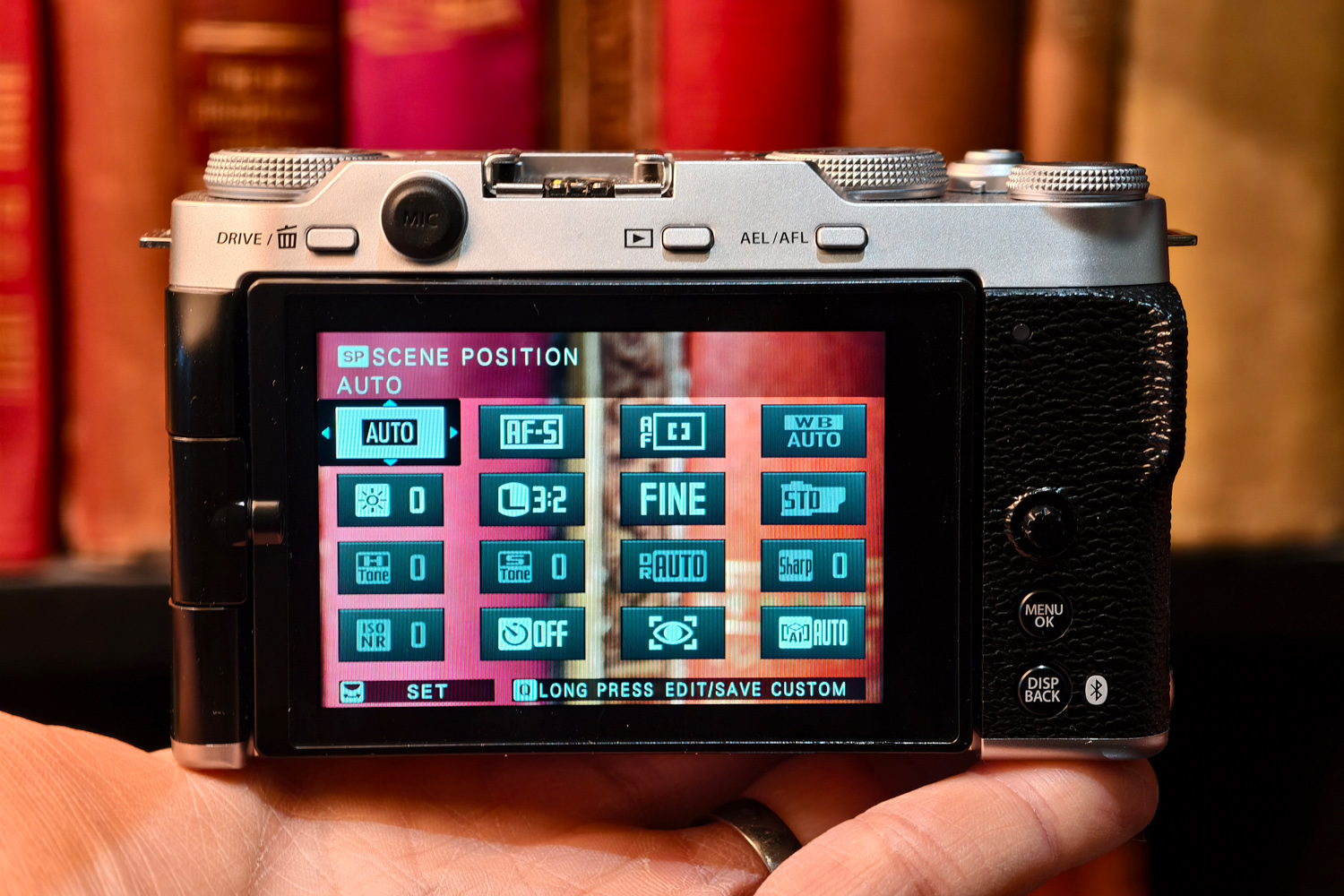
The Fujifilm X-M5 is one seriously compact camera. It’s shorter and narrower than an X100VI, and only just a little taller; that’s no mean feat given it still houses an APS-C sensor and Fuji’s F-mount mechanism for swapping out lenses. It weighs a mere 335g before you bolt on any glass, too. Without a lens fitted I’d almost call it pocket-sized. With one it could still fit in my coat, but I preferred to stick with my faithful shoulder strap.
Styling is pretty much what I’ve come to expect from a modern Fuji camera: a retro-influenced angular body, choice of black or silver colours, and just enough texture on the (arguably too) subtle hand grip to give you something firm to hold onto. While I’d pick the silver bodied X100VI every time, Fuji’s limited selection of matching silver lenses means black might be the better option for the X-M5. The 15-45mm f/3.5-5.6 power zoom kit lens is an exception, being available in both colours.
The top plate keeps things simple, with two command dials placed within easy reach of the shutter button. The familiar PASM dial is here too, while Fuji’s new darling – the film simulation dial – sits on the far left. There’s also a dedicated video recording button, and one for opening the Q menu which I thought was just a little too diddy to hit consistently; I’d have preferred this on the rear, which is otherwise pretty sparse. In general buttons felt that bit smaller than I was comfortable with, but that’s because I usually shoot on a larger camera – those who don’t mind compact cams will be right at home.
There was no room for a built-in flash like on the long since retired Fujifilm X-M1 – but unlike the Panasonic Lumix S9, Fuji hasn’t also ditched the hot shoe, so you could add an external one if you needed.
At the rear there’s just a joystick and a scattering of buttons around the LCD viewfinder, which flips out for vlogging and tilts for high- or low-angle shooting. It’s great to see Fuji relocate all the ports to the right side of the camera, so connected accessories won’t stop the viewfinder from unfurling.
Features & battery life: dial it up
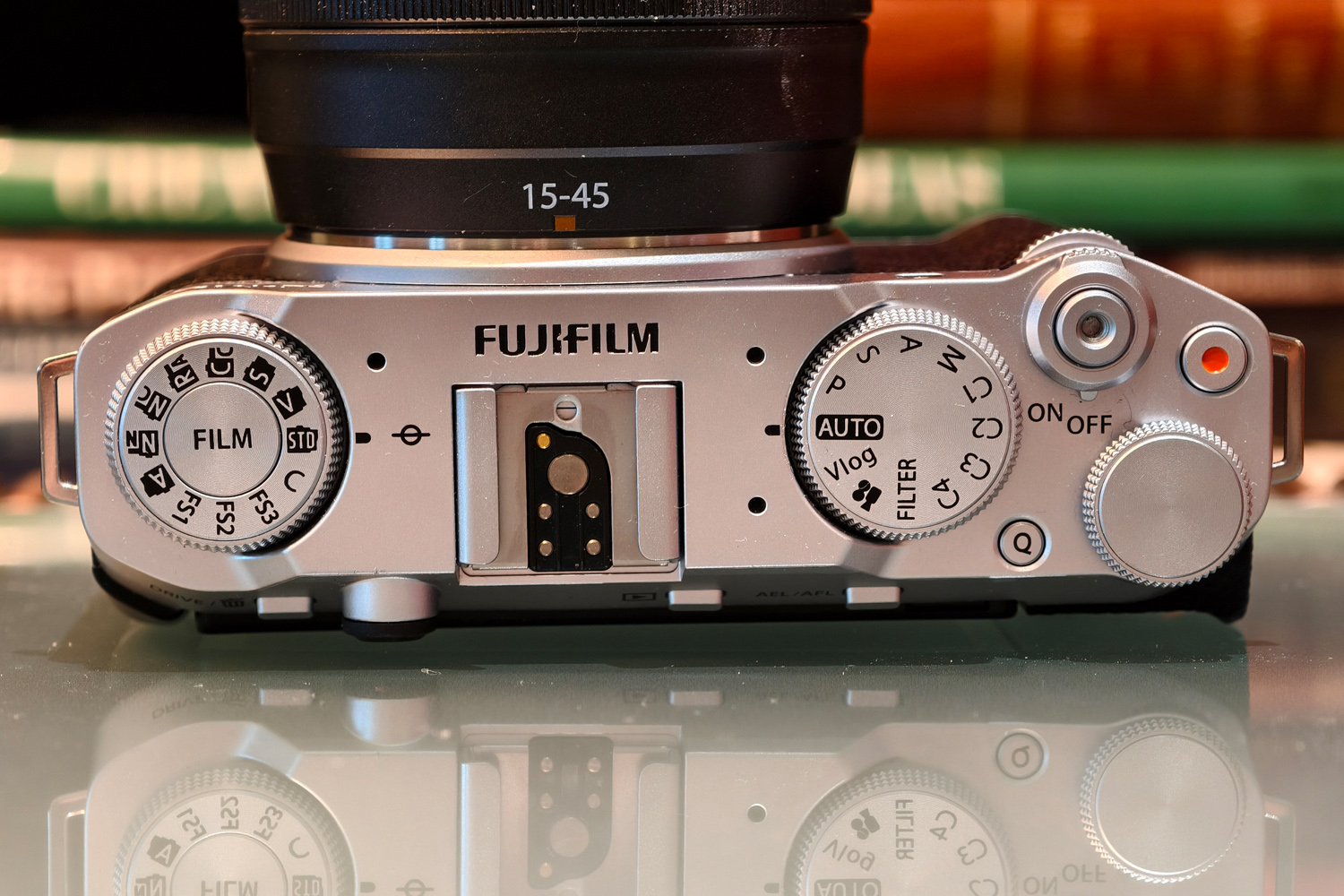
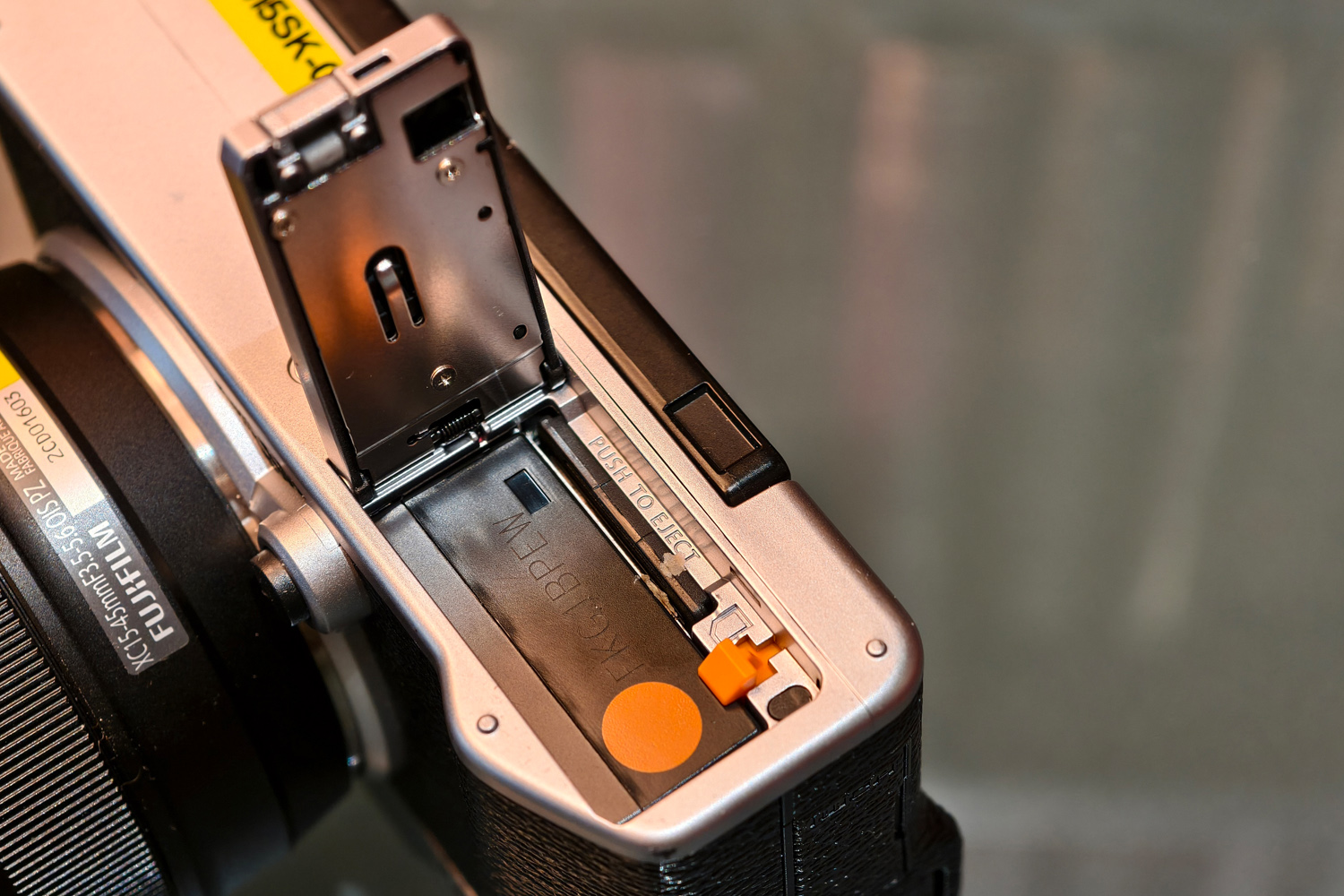
I’ll admit that during my first day of shooting with the X-M5, I went to frame a few shots thinking it had an electronic viewfinder. Sadly it doesn’t have one – I’ll just have to keep my fingers crossed for an eventual X-Pro4. Everything has to be framed using the LCD viewfinder, which was thankfully sharp and bright enough to use outdoors without any struggles. That said, an overcast London in the early days of winter was hardly a tough test.
The other thing I’ve largely taken for granted on Fuji’s last few cameras is in-body image stabilisation, which doesn’t make the cut here. That was also the case with the X-T30II (which this effectively replaces as the baby of the line-up), so doesn’t come as a huge surprise, and Fuji has plenty of optically-stabilised lenses to choose from – including the kit lens – so I don’t see this as a dealbreaker. I just had to be a little more careful with slow shutter speeds than I otherwise would have, though around 1/30 was perfectly usable.
Fuji has been catering more to videographers and filmmakers recently, so it’s no surprise to see a 2.5mm microphone input on-board. It’s conveniently placed right next to the hotshoe, too, so cables don’t have to dangle around the camera body. However, an additional in-body mic brings the total up to three, with greater wind noise reduction and background noise reduction than previous efforts, so you shouldn’t need to add an external mic for simple home movies. It worked pretty well in my testing, as long as the subject was in pretty close proximity.
There’s a microHDMI output at the side, along with USB-C for charging and file transfers. The latter can be used to send pictures directly to a phone using Fuji’s Xapp companion app now, as well as let the camera act as a webcam for your PC or Mac.
Open the battery gate (which can’t be done while the camera has anything mounted to its 1/4in tripod thread) and you’ll find a single UHS-II SD card slot for storage, and room for the smaller of Fuji’s two X-series batteries. The X-M5 is still able to squeeze out 440 shots in economy mode, though; that’s a 20% improvement over the X-T30 II, which uses an older, less efficient image processor. I drained it fully after an entire day of shooting, split across single images and bursts.
Performance: vlog on
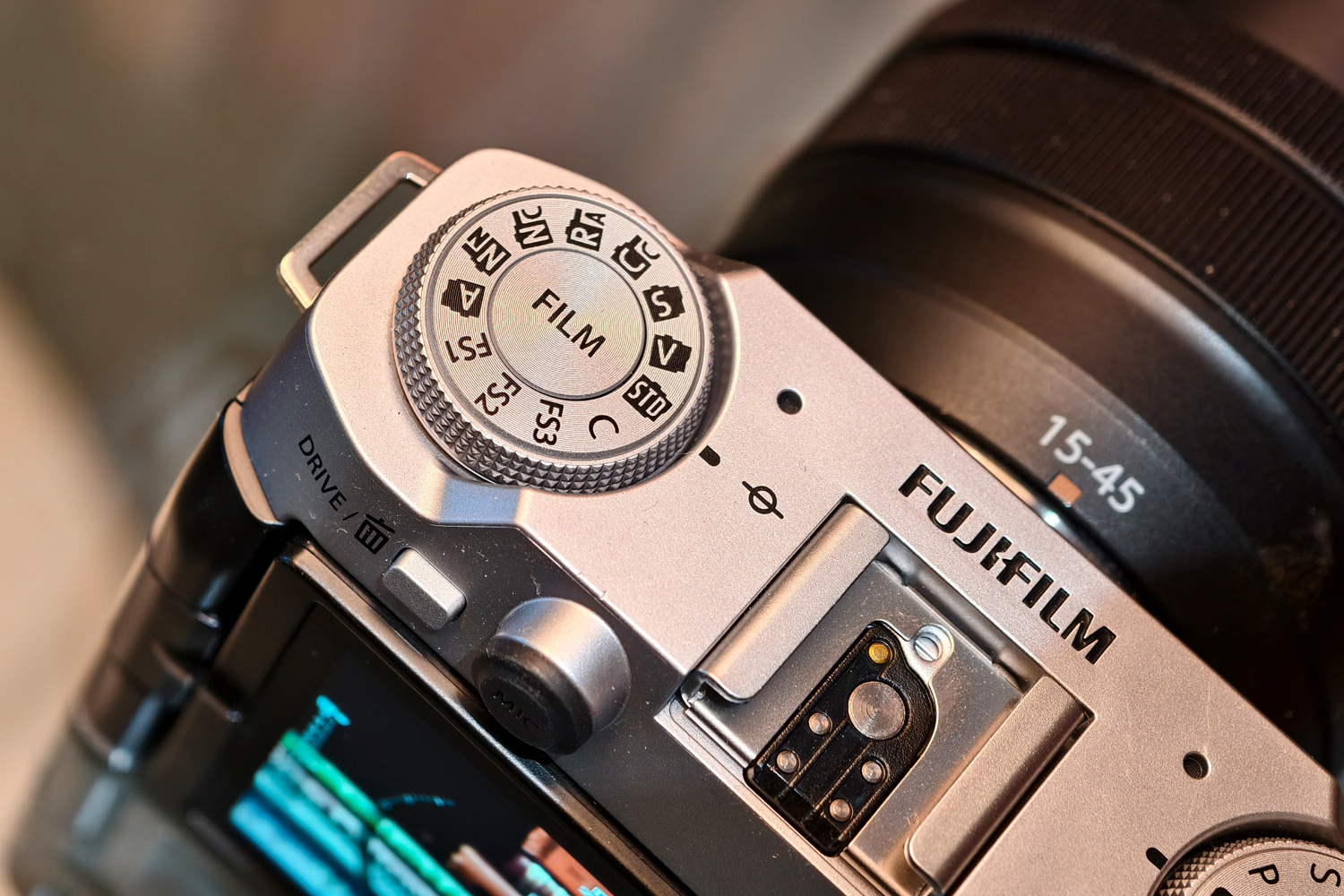
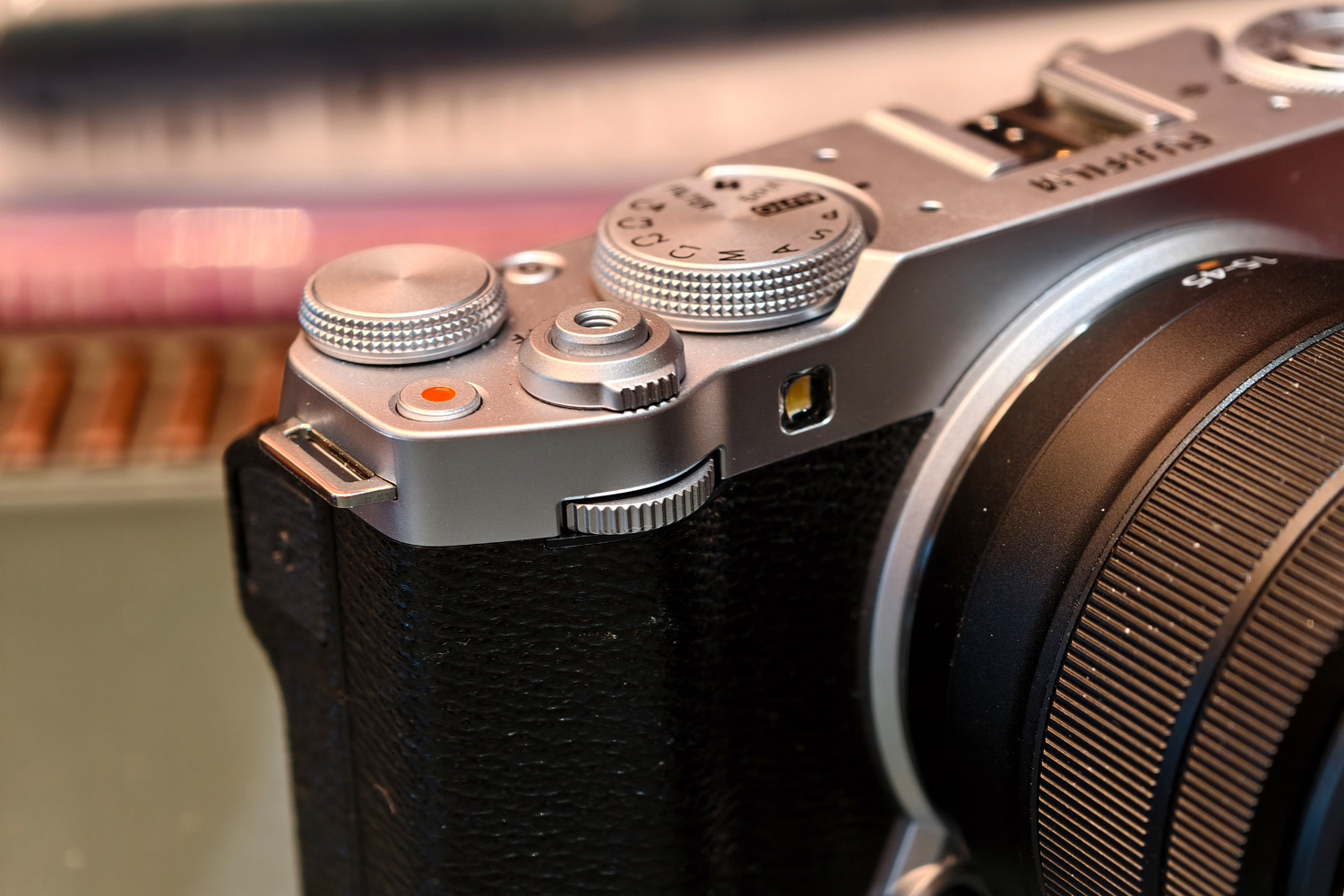
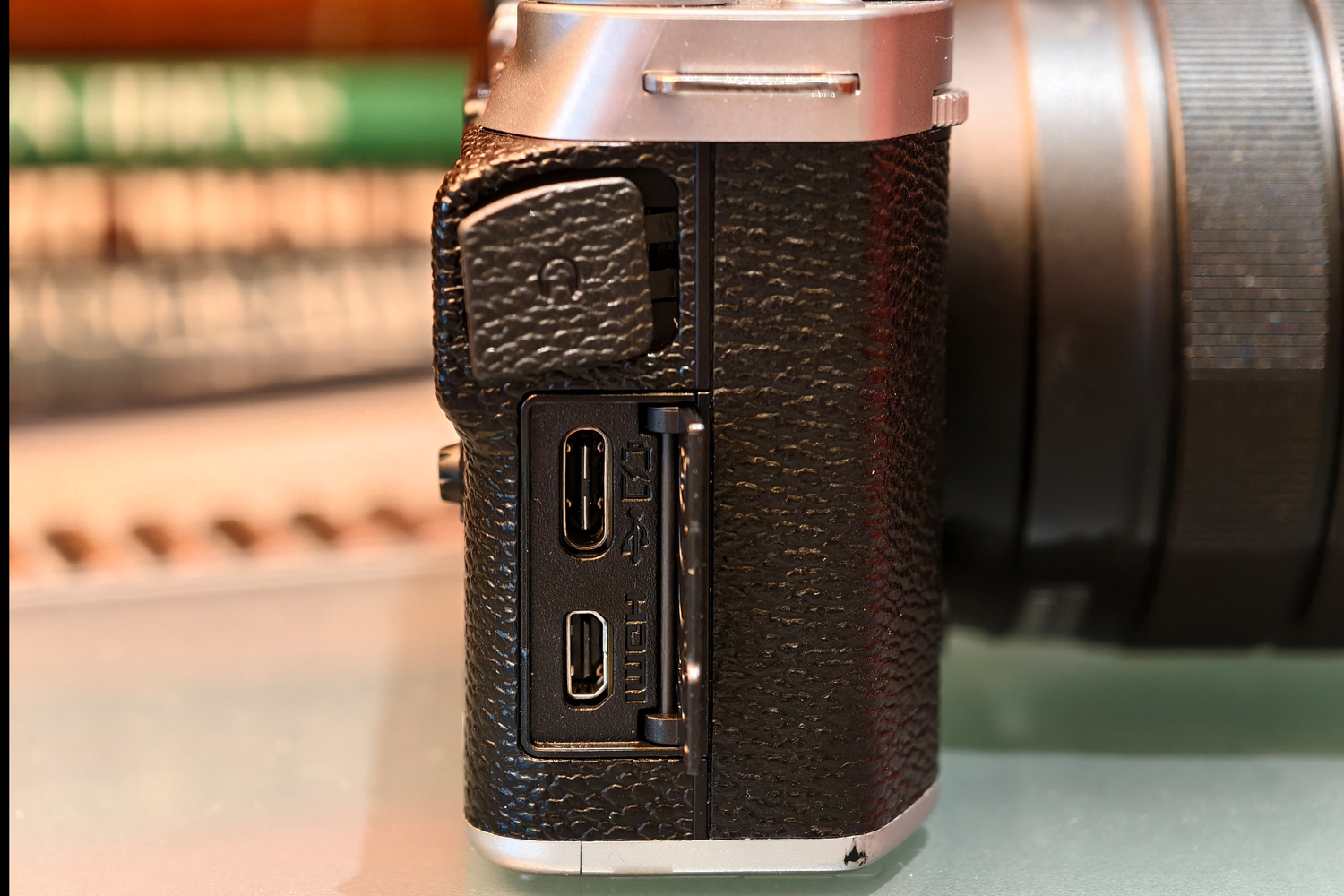
Inside, the X-M5 has much in common with the larger (and more expensive) Fujifilm X-S20. That includes the The 26.1MP X-Trans 4 image sensor, which is a step below the pricier X-T50 in terms of pixel count. It has the same X-Processor 5 imaging engine, though, which has seriously clever subject detection and newer, faster autofocus algorithms.
Without a side-by-side comparison – and a stopwatch – it’s tricky to judge just how much of a difference these changes have made, but I had no complaints at how quickly it recognised people, animals and vehicles when using the relevant object detection setting, or how fast it locked focus with a half-press of the shutter button. These new algorithms will apparently make their way back to older models using the same hardware, though it’s not clear when.
Speed is on par with the X-S20, with a satisfyingly sprightly eight frames per second using the mechanical shutter. It’ll manage 20fps with the electronic shutter at full resolution, or 30fps with a cropped sensor, which is easily fast enough for the sort of street, travel and family photography many owners will use it for.
The video mode felt the most changed for me, coming over from my personal X-S20. It has a new UI for the dedicated vlog mode, which puts useful shortcuts to features like product priority autofocus, a subtle skin smoothing Portrait enhancer, and a 9:16 short movie mode that’ll be ideal for shooting Instagram reels, TikTok clips and YouTube Shorts.
It’ll shoot 6.2K footage at 30fps in 4:2:2 10-bit colour, as well as 4K60 and FHD120p resolutions. At 25 degrees celsius ambient temperature it’ll manage over an hour of 4K30 recording, battery and memory card permitting, and is compatible with Fuji’s external fan accessory if you’ll be working in hotter conditions.
Image quality: living in a simulation
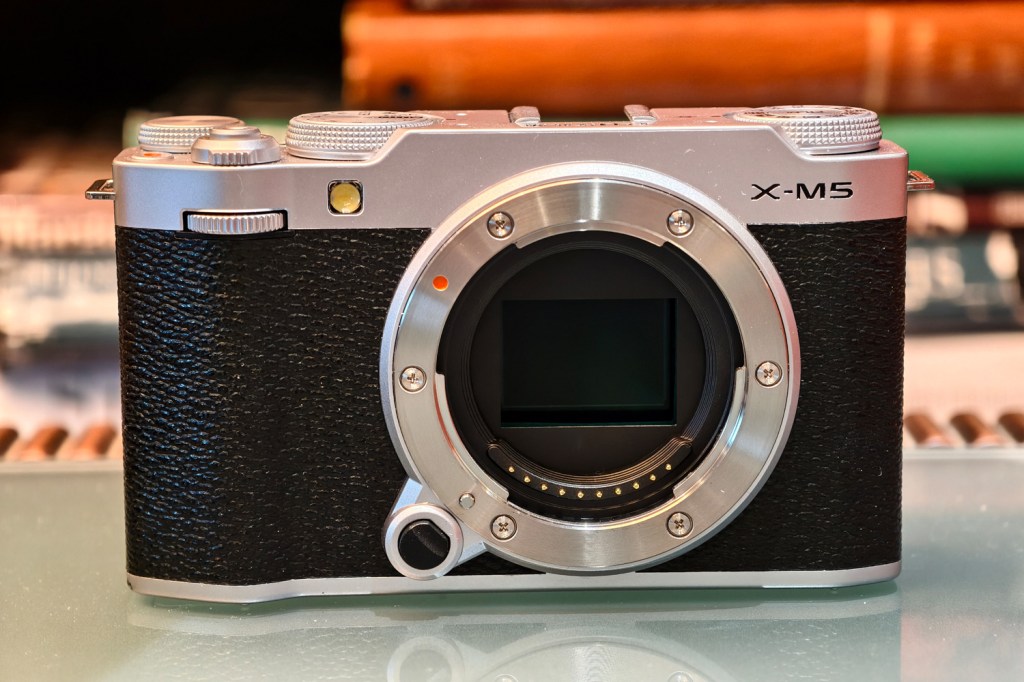
The 26.1MP X-Trans 4 sensor isn’t fuji’s latest APS-C effort, but it was used to great effect in the X-S20, is just as impressive here. The following images have been resized from the original files, so aren’t entirely indicative of image quality, but show off Fuji’s fantastic image processing. Everything was shot using the 15-45mm f/3.5-5.6 power zoom kit lens.
Fuji’s familiar colour science is present and correct, whether shooting in the standard Provia preset or picking one of the distinctive film simulations. The X-M5 has 20, including the latest, Reala Ace. Seven have dedicated slots on the film simulation dial, and you can assign three more through the menus – but Fuji still doesn’t make it as easy as it could to access user-created recipes.







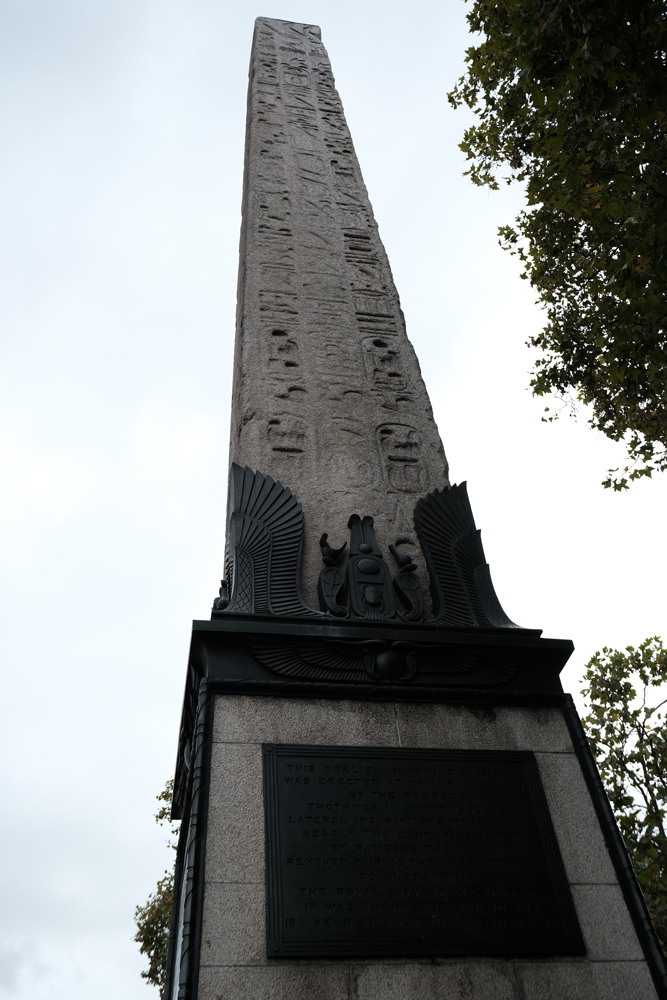


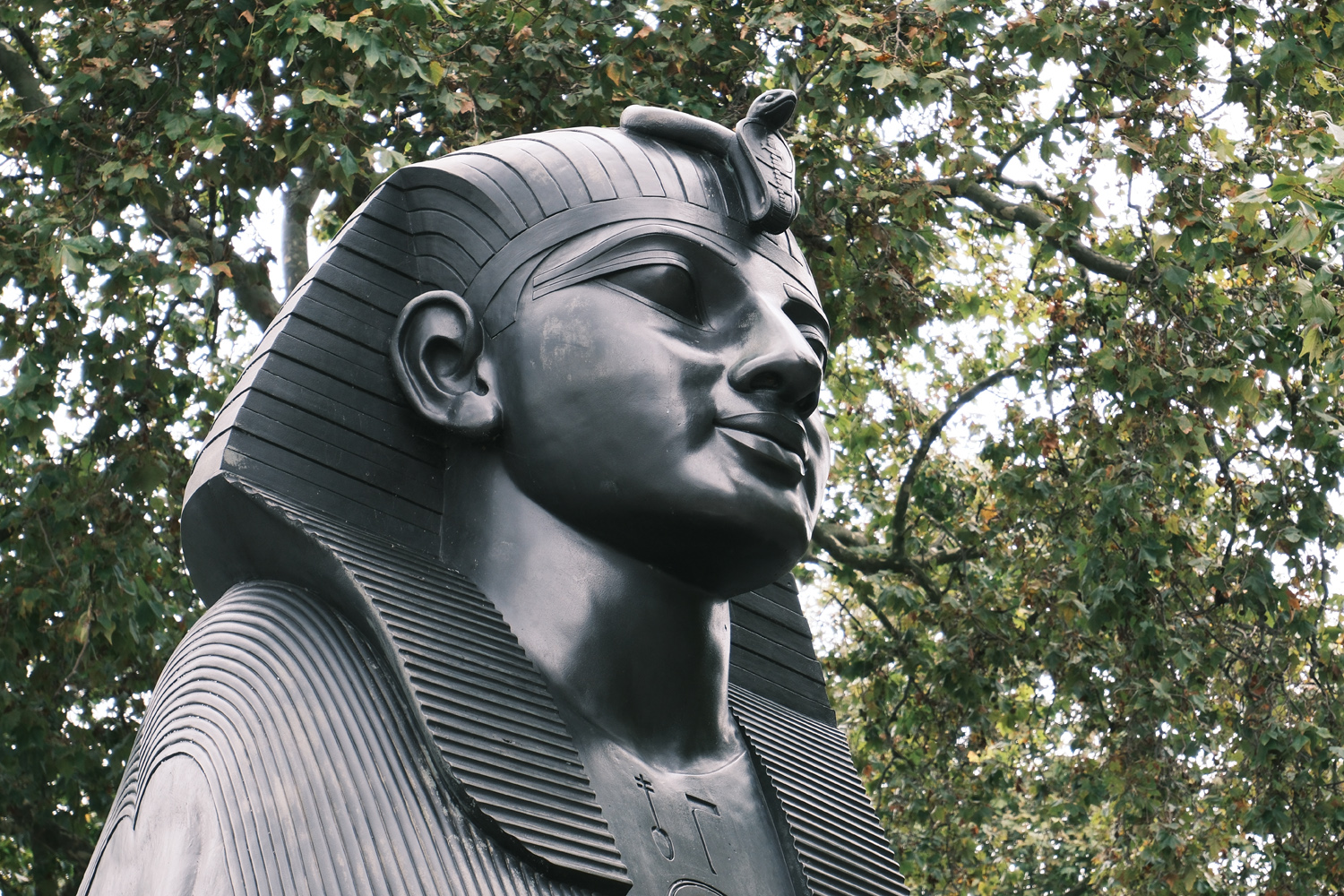






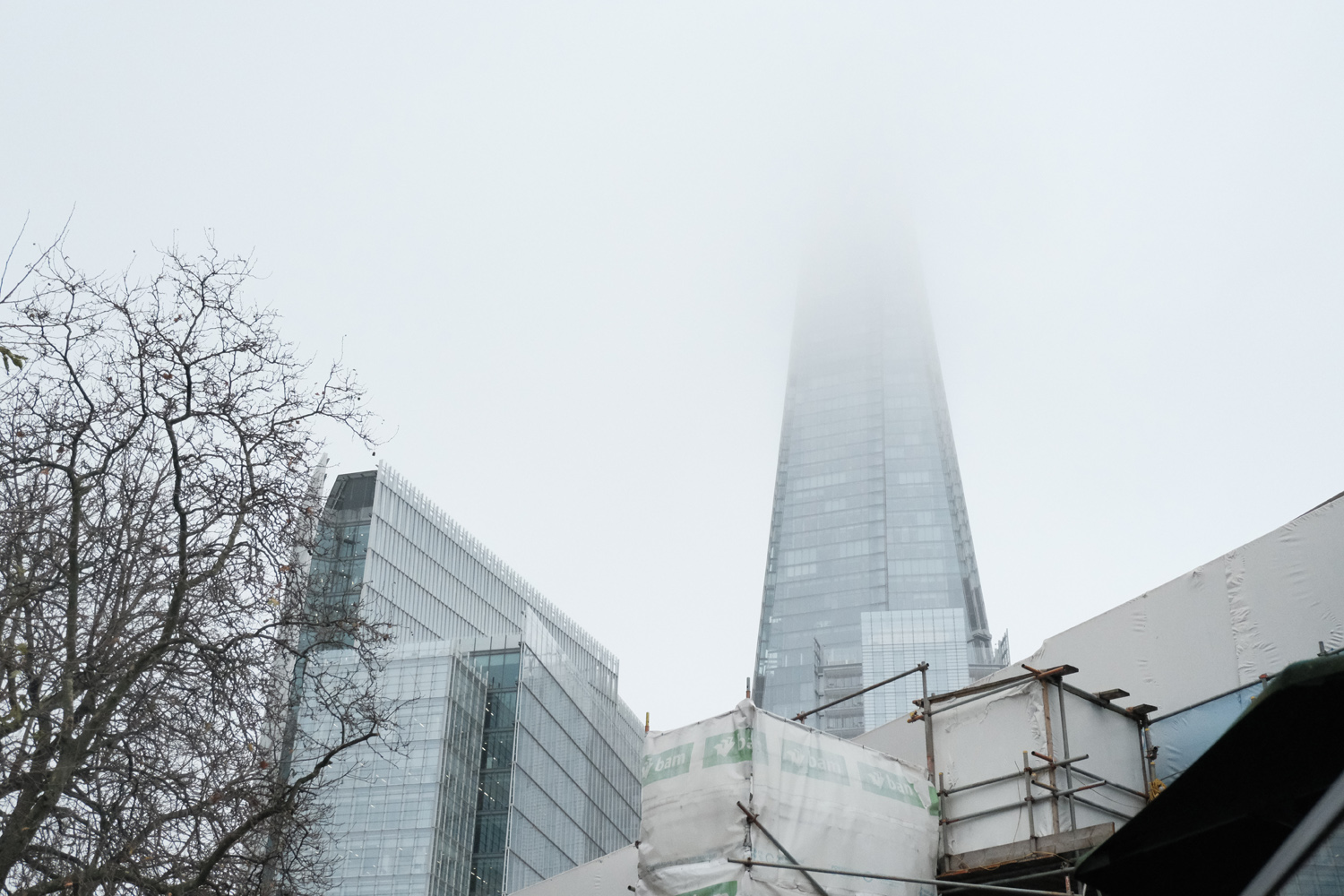


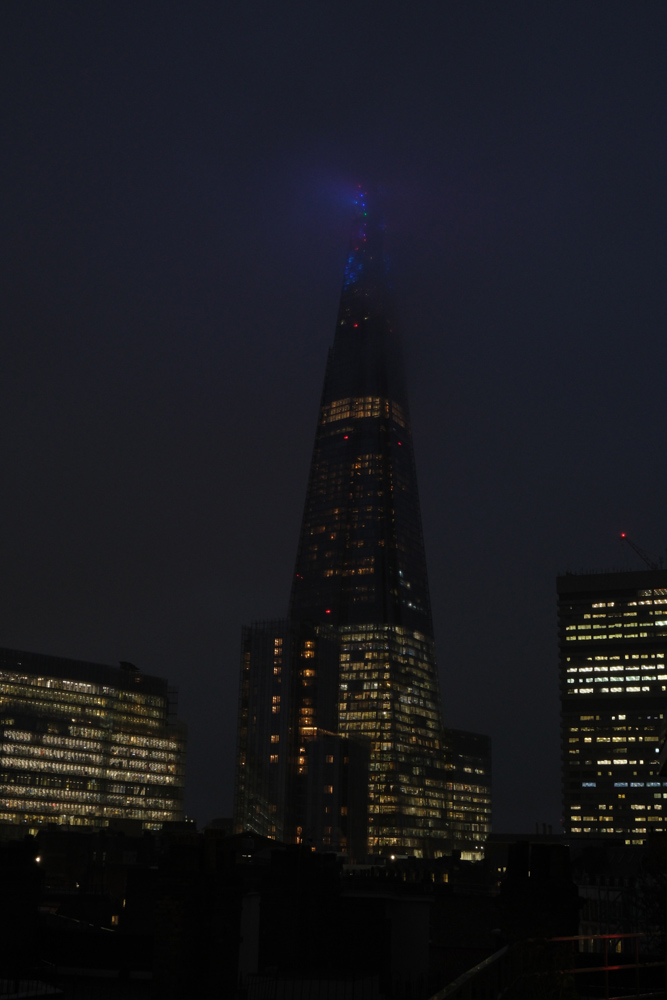





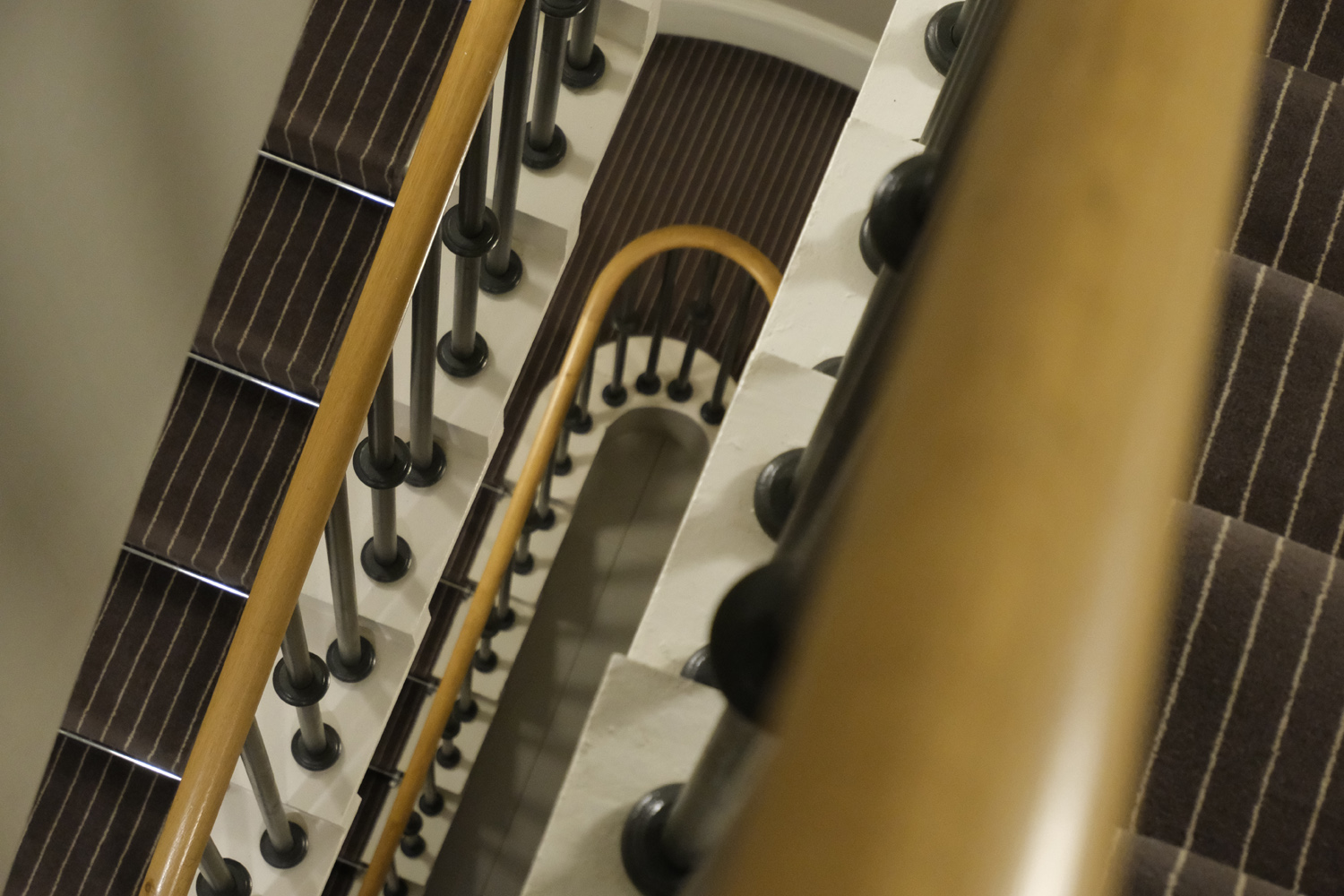




It may not have the highest pixel count of an X-series camera, but 26.1MP is plenty for capturing plenty of resolved detail straight out of the camera. Dynamic range coverage is excellent and images are kept clear of noise right the way up to extreme ISO levels. RAW files give you more room to play with exposure when editing later, but for the most part I was happy to share JPEGs directly – the colours are that nice.
The lack of in-body stabilisation didn’t really hamper me in low light, largely because the lens I was using had OIS, so I could use slower shutter speeds instead of cranking the ISO and continue to shoot handheld. If you’ve got fairly steady hands, you’ll be fine in all but the darkest of environments.
Fujifilm X-M5 verdict
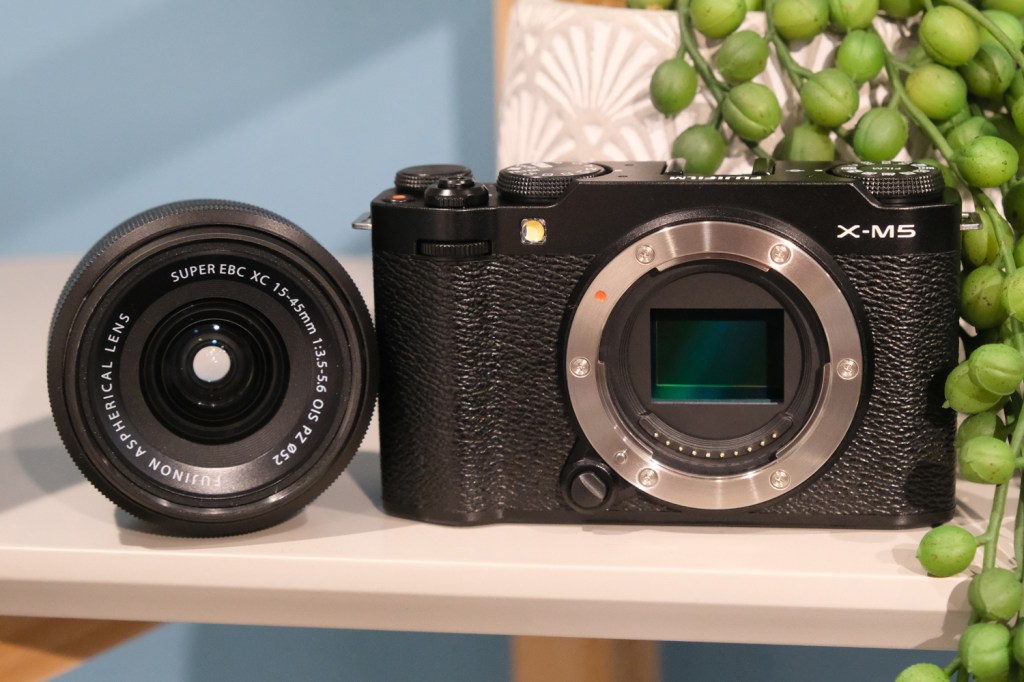
Don’t think of the Fujifilm X-M5 as an X100VI with interchangeable lenses. The price is a major clue this offering is more entry-level – but that doesn’t mean it’s at all compromised. Fuji’s tried-and-tested sensor and image processor combo delivers precisely the clarity and colour I’d expect.
The lack of EVF may dissuade photographers who can’t break the habit of bringing their camera up to their eyeline to compose a shot, and the compact dimensions won’t please everyone. For snappers migrating from a smartphone, though? Framing using a screen will be far more familiar. Having film simulations within easy reach will also appeal to the Instagram generation more than Sony’s more straight-faced (and ageing) A6400, which now costs similar money.
It’s more affordable than the functionally-similar X-S20, and half the price of a Panasonic Lumix S9, which I think makes it a top choice for budget-minded buyers wanting interchangeable lenses on a small scale.
Stuff Says…
The X-M5 brings Fujifilm’s smallest mirrorless model bang up to date with everything entry-grade shooters and smartphone converts could want. It loses a few features you’ll find further up the chain, but that doesn’t dent its appeal.
Pros
Distictive stills and excellent colours, with film simulation creativity
Very capable when it comes to video
Speedy subject detecting autofocus
Cons
No EVF or In-body stabilisation
Controls are very compact
Fujifilm X-M5 technical specifications
| Sensor | 26MP APS-C |
| Lens mount | Fuji X-mount |
| ISO range | 125-25600 |
| Continuous shooting | 8fps (mechanical) |
| Video recording | 62K30p, 4K60, FHD240p |
| Screen | 3.5in vari-angle LCD |
| Storage | UHS-I |
| Connectivity | USB-C, Wi-Fi, Bluetooth |
| Dimensions | 112x67x38mm, 335g (body only) |




